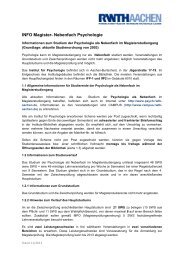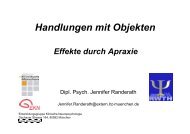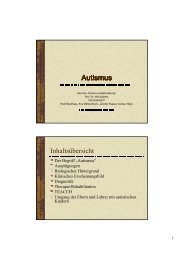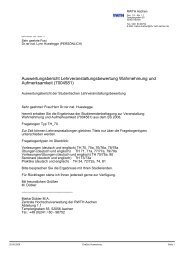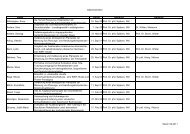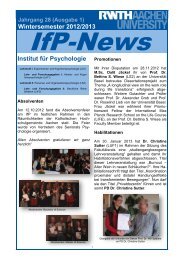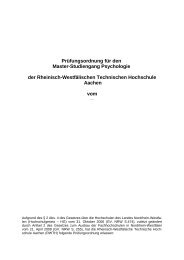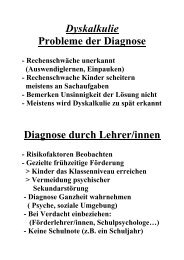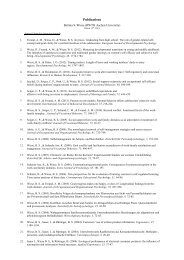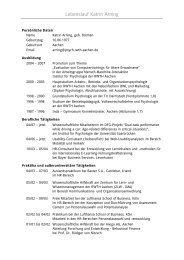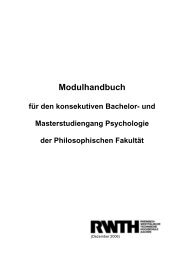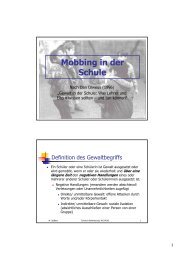1 Effects of Sensorimotor Transformations with Graphical Input ...
1 Effects of Sensorimotor Transformations with Graphical Input ...
1 Effects of Sensorimotor Transformations with Graphical Input ...
Create successful ePaper yourself
Turn your PDF publications into a flip-book with our unique Google optimized e-Paper software.
Since the use <strong>of</strong> the mini-joystick did not need a translational hand movement, but force, our<br />
findings strongly supported the view that the display movements were controlled and<br />
executed by the anticipated action-effect movements (see also Sutter & Ziefle, 2004, 2006).<br />
The question what user’s control is not answered that clearly, since hand movement and<br />
cursor movement were confounded in Experiment 1. Therefore, to replicate and extend the<br />
finding <strong>of</strong> visual action-effect control, a digitizer tablet was used in the present experiment<br />
<strong>with</strong> a Fitts’ task. Within a block <strong>of</strong> the experiment, participants always executed the same<br />
proximal movement on the digitizer tablet (no change in motor space), but the gains and/or<br />
the target sizes varied (changes in visual space only). Movement times should be constant<br />
<strong>with</strong>in a block if the proximal hand movement on the digitizer tablet actuates motor control.<br />
On the contrary, we expect them to vary <strong>with</strong> regard to Fitts’ law, if it is the distal action<br />
effect on the display (i.e. the cursor movement) that determines movement times.<br />
3.1 Method<br />
3.1.1 Participants<br />
Nine students from the RWTH Aachen University (6 male) participated in this experiment.<br />
3.1.2 Apparatus, task and stimuli<br />
Participants sat in front <strong>of</strong> a digitizer tablet (WACOM Intuos2 A3) that was operated <strong>with</strong> a<br />
pen (WACOM Intuos2 Grip Pen). Experimental tasks were presented on a 17’’ CRT display<br />
(EIZO F563-T) <strong>with</strong> a 1024 x 768 resolution. A cover screened the hands from the view.<br />
Participants were only able to see the display <strong>of</strong> the cursor movement, not the movements <strong>of</strong><br />
their hand on the digitizer tablet. The task involved moving the cursor back and forth between<br />
two target boxes that were horizontally displayed on the screen. Each trial lasted until 25<br />
error-free movements occurred.<br />
12



